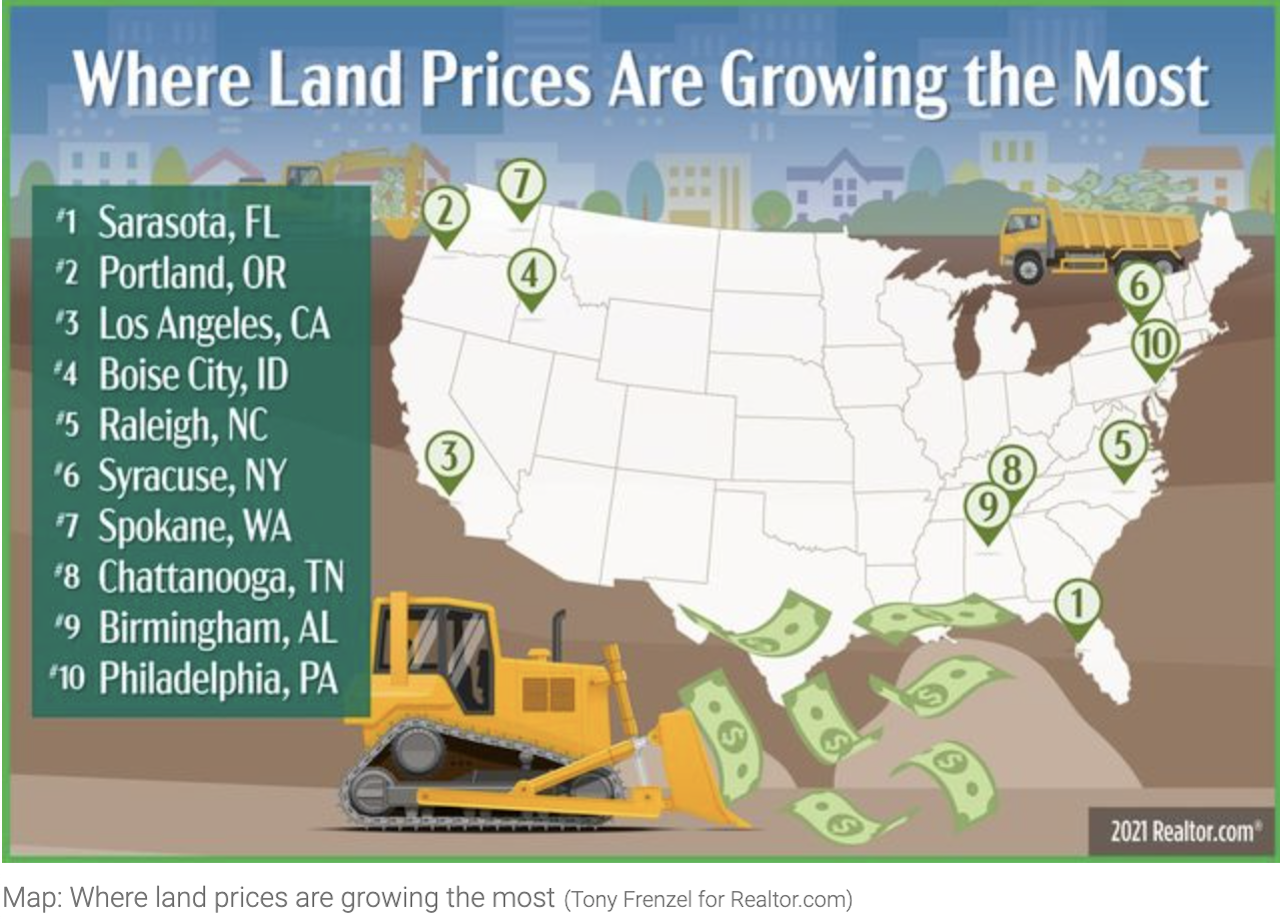Land
As Certainties, Doubts Offset One Another, Land Looms Large
High-stakes wagers on the future value of lots take intestinal fortitude, confidence in structural demand, and increasingly, extra clout to land the deals.
There's a reason residential real estate tends to produce generation after generation of deal junkies. It's called the squeeze.
The squeeze takes place between a rock and a hard place. On one side, all of those catch-phrases about the timeless value of real property, none more quoted than Mark Twain's.
Buy land. They're not making it anymore.
On the other, a well-tested adage.
There are no bad land deals; only bad timing.
Only now, contrary to Baron Rothschild's guidance on when to buy anything – "when there's blood in the streets" – now's a moment where many feel compelled to buy when there's no blood in the streets.
Therein lies the squeeze, and when the pace of demand for homes – resales, new-homes, new-homes-to-be – not only eclipses the current pace of production, but vastly over-matches the capacity of buyers-sellers-local official permitters and planners to add to the pipeline, timing is all anyone who participates in the high-stakes marketplace of land demand can think about.
The present features deal-making dynamics in the context of a big imbalance on the supply side of the coin, which favors sellers – of land, of people (and local builders and developers) who own it – and puts potential buyers into a feeding frenzy mode.
For large public homebuilding companies about to join in with other publicly-held enterprises in announcing bumper-crop quarterly earnings – especially compared with a Q2 anomale in 2020 when Covid-19's sudden all-destroying arrival sent the world into a free-fall that briefly included homebuilders – that feeding frenzy takes on greater urgency.
"Incremental sales growth, and the opportunity to hold margins in the third and fourth quarters will likely need to come from strategic acquisitions among the publics, either to deepen their scale in markets they're already in or to expand into these secondary or tertiary markets that will show resilience in a work-from-anywhere reset," said one executive with knowledge of land and asset acquisition activity brewing up right now. "Additionally, along with Asia-based companies who are still actively adding to their North American portfolios, there are a number of Canada-based acquirers, not to mention Clayton Homes as a potential acquirer, and any number of institutional investment financial players keen to acquire land for purpose-based single-family built-to-rent communities."
Buyer motivations – in light of fundamental demand expectations in a growing economy, a family-formation-focused Millennial cohort, and an accommodative fiscal and monetary policy backdrop making money cheap to borrow – for land and builder assets could hardly be more pronounced.
Sellers' urgencies and advantages stack up under three primary motivators, all of which point to valuations that may be reaching a timing inflection point:
- Exit strategies of principals, founders, or stakeholders who are "ripe" to plan a gracious rampway out of the business.
- Capital infusion for principals whose model has proven to show momentum and scale-ability in competitive arenas.
- Reduced risk of lending exposure to a turn in demand, pricing, or other impacts to margins in a more competitive mid-term future.
The National Association of Realtors data-mined real estate property values by price-per-square-foot of land and came up with a Top 10 list of "where land prices are growing the most," based on 2021 versus 2020 buying and selling activity.

NAR correspondent Sara Ventiera writes:
The places where raw land prices have risen the most since last year all have vibrant and growing economies, making them good bets for relocation. Some have a land supply limited by geography or local zoning ordinances—and as people fleeing more densely populated and expensive areas stream in, that demand pushes up prices for lots, just as it does for existing homes.
The back-half of 2021 will reflect a match of wits, intestinal fortitude, and deep market intelligence into how both prospective buyers and sellers will play off their leverage and asymmetric access to information.
Of note, as fewer larger players deepen their competitive share of scale in each of their operating arenas, smaller players face steeper odds against finding their niche. But that doesn't mean some won't continue both to try and to succeed at doing so, which makes them even more valuable and valued among those who'd like to add them to their constantly growing portfolios.


